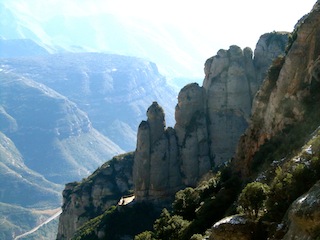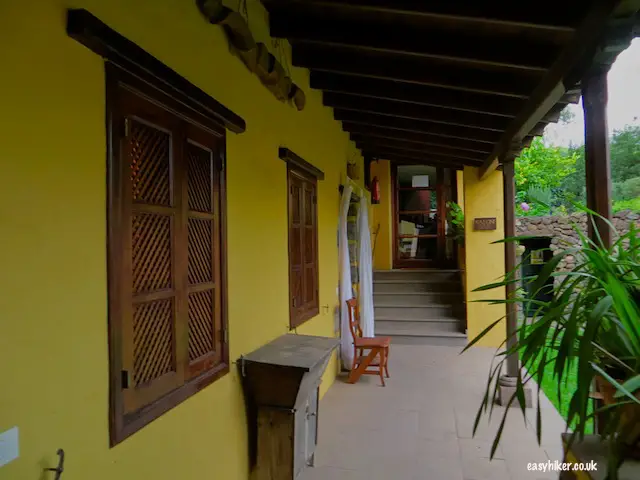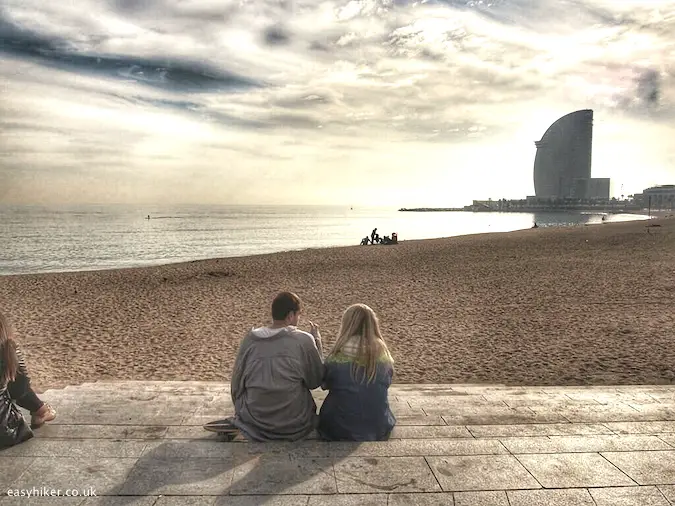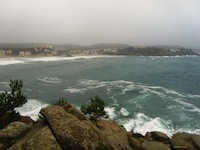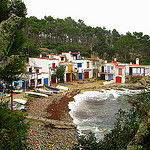Hiking in Gran Canaria
The Caldera de Bandama Hike
A caldera is the black hole of geology: the remnant of a supernova-sized explosion when all the remaining energy of a volcano is released in one almighty blow. After the explosion, the volcano collapses into its – now empty – magma chamber, leaving a crater-like surface structure that can extend for dozens of square miles.
When a big volcano explodes in this way, this can be literally a life-changing event: the explosion that created the Yellowstone caldera, for example, emitted enough ash to cover most of North America west of the Mississippi, and if such an explosion were to happen today, most life on earth would be threatened by the ensuing “nuclear winter”.
The caldera of Bandama hike we did in central Gran Canaria, however, was created by a much smaller explosion – thankfully, because it happened fairly recently, perhaps even in historical times, little more than 2000 years ago – and therefore has a diameter of only one km.
Farming appears to have returned to the area a few decades after the explosion, but while the lava soil outside of the caldera was fertile enough for agriculture of a high standard (such as vineyards), the more prairie-like inside was only ever used for cattle, grain and small, intensely managed vegetable orchards.
The small size of the Bandama also allows you to do something that you could never do in Yellowstone: walk to the bottom of the caldera and once around its rim on the same day – either walk is only about 3 km long. For us, this tour was on our programme for Day 3 of the Gran Canaria Walking Festival.
Enter the Bandama through the main gate on the busy highway and follow the signs to the Mirador (a viewing platform) and from there to the “Fondo”, the very bottom of the caldera …
… where you will find a small farm that is still in operation.
An 85-year old man called Agustinito spends his days here with his cow and a couple of goats. He is something of a local celebrity, but apparently very shy and withdrawn, and almost certainly the last connection to the long farming tradition of the caldera.
The land inside the Bandama has been bought by the local government with the express purpose of returning it to its natural wild state, re-planting the original species and erasing as much as possible all traces of agriculture. Today, the caldera already looks much more “its old self” than it did 20 or 30 years ago.
Agustinito operates with a special government permit, but even he does not sleep there all the time, sometimes preferring to come every morning and leaving in the evening for his sister’s house in the near-by village. (He is also the one who opens and closes the gate.)
After you have returned to the starting point of the first walk (more or less on the same route, having taken a short walk around what is left of the farm) …

… leave through the gate and continue clockwise around the caldera, initially on the asphalted track on your right hand side.
Turn right on to the dust track when the road makes a left turn and simply follow the trail from here. (Initially, the track winds down and away from the caldera, but don’t let that worry you: it comes back and will lead you along the very top of the ridge, back to where you have come from.)
Near the gate to the Bandama, there is also a small restaurant that offers food and drinks. They have toilets, too, the only “public” toilets anywhere in the area, although we recommend that you order at least a lemonade or a coffee before using them.
The Bandama walk is something you can easily do on your own, since both “halves” of it are circular and the caldera can be conveniently reached by bus from Las Palmas or San Brigida. Just take line 311 – there is one bus every hour.
We nevertheless recommend to join a hiking group with a local guide – we learned so much about the geological history of the area and its plant life that we would never have found out on our own.
If you decide to dispense with a guide, however, you should at least do what our guide suggested for us to do: at the bottom of the caldera: Shut up for two minutes – and just listen.
You will find that there is not much to listen to – the silence is nearly total – but once your ears have adjusted to the virtually complete absence of any sound, you will begin to hear wondrous things. I for one can easily imagine that Agustinito, the lone farmer of the Bandama, can hear his goat step on a dry branch of wood hundreds of metres away.
After we finished the second walk around the circumference of the caldera, it was still early in the afternoon, and our guide took the group to the Bodegas Volcan, a 10-minute drive away, for a late Spanish lunch where we were served local specialties like squid and papas arrugadas with hot mojo sauce as well as some excellent local wines to wash it all down.
This was the perfect way of rounding off the afternoon: easy hiking at its best with the Caldera de Bandama hike – and another strong argument in favour of a guided tour. We would never have found this place on our own! (The Bodegas Volcan in Santa Brigida is open to the general public Saturdays and Sundays, weekdays only on appointment and for larger groups.)







